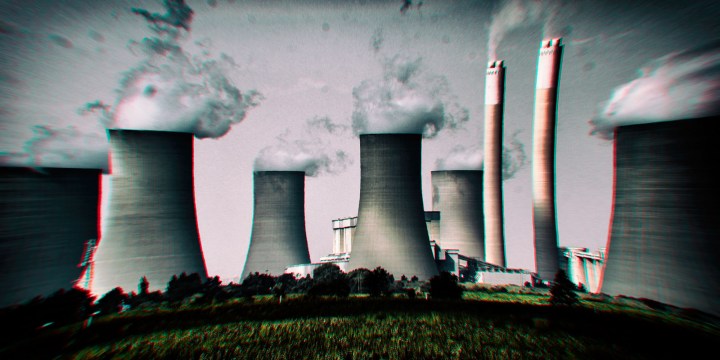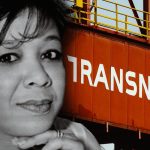POWER CRISIS
Government’s debt relief for Eskom gives power utility some breathing space

Eskom received a R16bn payment from the National Treasury at the end of July, which is part of the R254bn that the power utility stands to receive to pay a big part of its total debt load of R423bn.
Eskom sees no need to borrow any new money over the next three to four years to fund its electricity generation, transmission and distribution operations because the government is starting to take over a portion of its smothering debt load.
The government recently provided Eskom with R16-billion, the first tranche of the R254-billion that the power utility stands to receive to pay a big part of its debt — giving it the breathing room to fund its operations instead of servicing hefty borrowings.
Eskom received the R16-billion payment from the National Treasury at the end of July, which the power utility used to settle borrowings that came up for maturity/repayment. Eskom expects to receive another tranche in October. Once fully transferred over the next three to four years, the R254-billion will substantially reduce Eskom’s total debt of R423-billion.
The government argued in the February Budget that it was necessary to give Eskom a R254-billion lifeline — in addition to the more than R517-billion in state bailouts it has received over the past 17 years — to get the power utility into financial shape and open up the electricity market.
Acting Eskom CEO Calib Cassim said the government’s latest financial help was starting to pay off, taking “tremendous pressure off” the power utility’s financial situation, allowing it to now fund its operations from the revenue it generated from electricity sales.
Borrowings
Before the government’s intervention, Eskom was forced to raise borrowings of between R50-billion and R60-billion every year to keep its operations going. The government would often be on the hook for paying Eskom’s borrowings because it is a loss-making enterprise.
Cassim said the pressure to borrow in financial markets had been lifted, at a time when debt was costly because of higher interest rates.
“Management efforts can now focus on operations to deal with other challenges, such as governance and easing load shedding,” Cassim said during a press briefing on Thursday.
One of the conditions tied to the debt relief measure is that Eskom is not allowed to borrow new money over the next three to four years, unless in exceptional circumstances, which would require approval from the Treasury.
Based on Eskom’s projected capital expenditure requirements for its electricity network over the next five years, Cassim said the power utility was “comfortable” that the debt relief programme would be enough. This implies that Eskom has sufficient funding or cash to run the power utility without needing to borrow new money.
“After the five-year period, there will be a need for an optimal capital structure going forward. Those discussions need to happen with the Treasury. We cannot repeat the mistakes of the past [of relying on state bailouts for survival].”
Eskom will arguably need to spend money on the maintenance of its power stations, especially in the coming spring and summer months. During summer or hot temperatures, components at power stations are sensitive and more susceptible to breakdowns, which necessitates higher stages of rolling blackouts.
Outlook for rolling blackouts
In the next few weeks, Eskom will announce a plan to deal with blackouts during summer. Cassim said Eskom was going into the summer season “much more comfortable” because some generating units that had been offline for a long time were set to come back online.
All three units at Kusile coal-fired power station in Mpumalanga, which have a combined capacity of 2,160MW and have been offline for 10 months, are set to be returned online in November. Unit 1 at Koeberg nuclear power station in Cape Town is set to return to service in November after going offline to replace the steam generators. The return of units at Kusile and Koeberg could add up to 2,800MW to the grid, equal to nearly three stages of Eskom blackouts.
About the outlook for blackouts, Cassim said: “If we can get to the next three and four months at similar levels [Stage 1 blackouts in the mornings and Stage 3 in the evenings], even with the challenges of summer, I think we are on the right track to have a better year. There is definitely hope to look at 2024 without stressing much about load shedding.”
This might happen if generating units at Kusile and Koeberg are returned as scheduled, and Eskom manages the electricity demand and connects to the grid the renewable energy procured during recent bidding windows. DM
















 Become an Insider
Become an Insider
Yet not a single arrest of any ANC cadres that deliberately looted Eskom into this state, not a stolen cent has been returned and yet we must trust the same ANC that robbed all our state enterprises through criminal cadre deployment? Now the ANC has decided to pass the cost of their crimes onto the citizens as they prepare their next round of thieving the state? The same ANC that robbed the country of billions through their train contracts with China and left us with a broken rail system and billions spent on trains that do not exist at all. The ANC lies and steals.
I AGREE EVERYTHING THIS GOVERNMENT IS PROVEN TO BE INVOLVED IN THE FUNDS DISAPPEAR WITH NO CONSEQUENCES EVER TAKING PLACE WHEN ZUMA WAS INVOLVED WITH THE GUPTAS CYRIL WAS THE VICE PRESIDENT ???
SAY NO MORE !!!